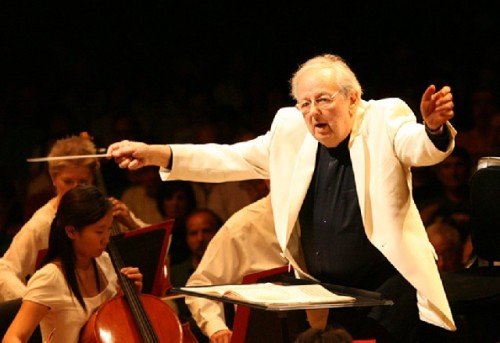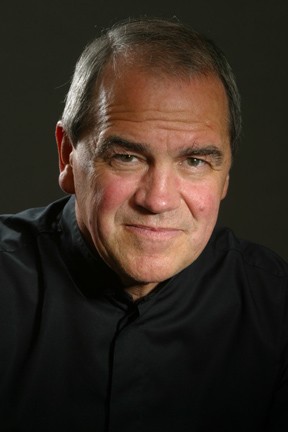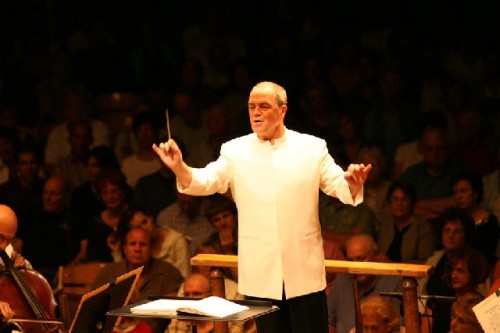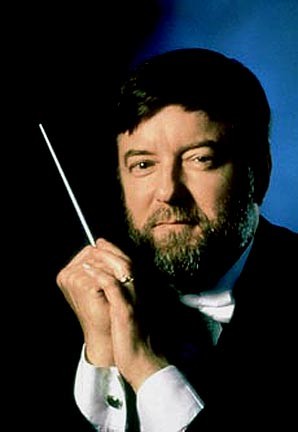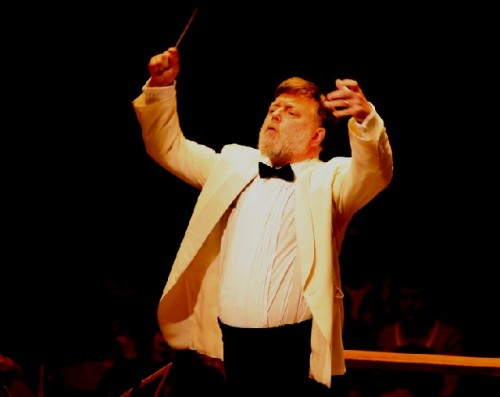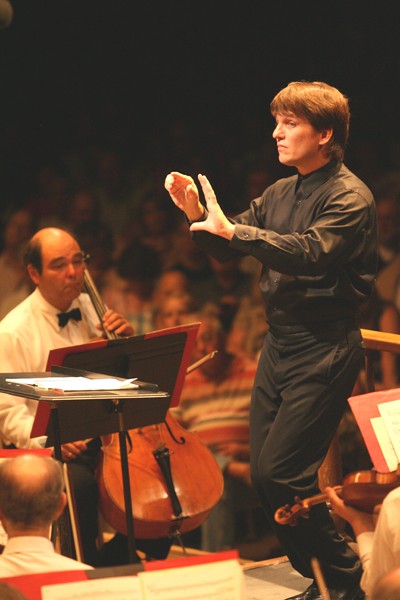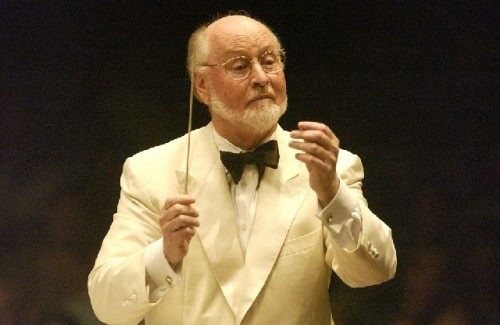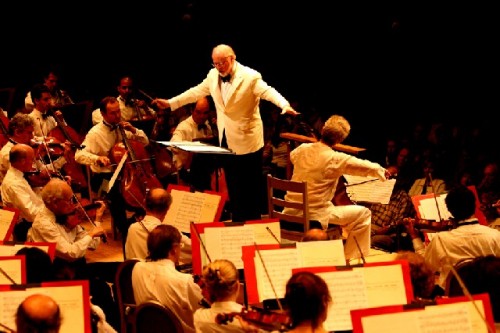Tanglewood On Parade Features Five Renowned Conductors
Evening Climaxes With Fireworks and Tchaikovsky's 1812 Overture
By: Charles Giuliano - Aug 06, 2008
During the summer long monsoon we were treated to a glorious day for the traditional Tanglewood On Parade one of the most beloved cultural events in the Berkshires. Once again, blankets and chairs were set up on the lawn as far as the eye could see. While, on a Tuesday evening, the Koussevitzky Shed was jammed to the rafters with visitors.
When Andre Previn closed the program with a spirited and passionate rendering of the ever popular "1812 Overture" by Tchaikovsky, with the combined Tanglewood Music Center Orchestra and the Boston Symphony Orchestra, it seemed that there were almost as many musicians on stage as there were people in the audience.
The enormous orchestra assembled for the finale, punctuated with fireworks, signified that the Tanglewood Music Festival pulled out all the stops for this annual celebration.
The Parade started at 2 PM with fanfares at the Main Gate and there were a dozen events occurring through the day leading to the evening performance in the shed. Many of the activities were planned for families and children. There was an open invitation to stroll about and take full advantage of the well tended Lenox campus.
One of the events, however, an interlude of fanfares in the Shed at 8 PM, caused considerable confusion as folks arrived for the 8:30 PM performance. Much harried ushers tried to keep people from taking their seats during the interlude. But ticket holders bolted and found cooperative ushers so there was considerable pandemonium.
After the interval of fanfares there was a break as the stage was set up for the first performance and, for the most part, the audience was seated by the announced and usual time.
Once things settled down we came to appreciate just what was meant by Tanglewood on Parade. We enjoyed a wonderful overview of the best of Tanglewood as five, world renowned conductors took turns marching across the stage. Given the populist and family oriented nature of the concert the music was selected for its appeal and accessibility. During the course of the evening one was encouraged to compare and contrast the style and technique of the individual conductors, including observing their sartorial preferences. Just for fun, in the spirit of the occasion, we will have some comments about that. Although, clearly, how the conductor is attired has nothing to do with hearing the music.
The program commenced with Hans Graf, taking the podium in what appeared to be a post modern version, in white, of a 1960s Nehru jacket with a high collar. It was a buttoned up, fashionable, avant-garde, look which seemed to conflate with the bravura and precision of his reading of the lushly literal, exotic, and programmatic "Fountains of Rome" (1916) by Ottorino Respighi. It was so richly evocative that it made us want to turn around, back to the stage, and hurl coins over our shoulders, just for good luck, into an imagined Trevi Fountain.
Once again, as he had on Saturday night, Sir Andrew Davis appeared to be the designated hitter for the missing James Levine .. We had much enjoyed his brisk and vigorous approach to the Tchaikovsky opera "Eugene Onegin." Davis surged into the richly colorful and evocative "Four Sea Interludes" from the opera "Peter Grimes" (1945) by Benjamin Britten. The final sequence "Storm" (Presto con fuoco) was so descriptive that it might well have been performed during the John Williams film night. It wasn't a stretch to imagine a ship tossing and hurling about in those surges of thunder and lightning. This dramatic music also made us recall the crash and bang of the Elliott Carter "Concerto for Orchestra." One of the great delights of returning to Tanglewood frequently during the season is the opportunity to compare and contrast our experiences.
On the podium Sir Andrew is a jaunty and lively presence. Once again it was endearing as he asked different sections of the orchestra to stand and take a bow. He was generous in his appreciation of the orchestra. By the way, he was attired in a white dinner jacket and black tie. Very formal and a tad Brit.
During his turn at bat during this All Star evening Keith Lockhhart, a man in black, with exquisitely tailored shirt and slacks, encouraged a rock star look.. The notion of casual and populist was further evoked by his "hands on" style of conducting which was broadly gestural and avoided the pointed precision of a baton. Compared to other aspects of the program, selections from Leonard Bernstein's musical "On the Town," while enjoyable and appropriate, seemed a bit light.
So soon after the marvelous Film Night it was a treat to have John Williams, again, however briefly. The cellist, Martha Babcock, was the soloist for his "Elegy" for cello and orchestra. It was politely received as was "Bugler's Dream" by Arnaud. But, the crowd went wild, as Williams blasted a bases loaded shot over the Green Monster when he performed his "Olympic Fanfare and Theme." After circling the bases and high fives with the musicians he departed the stage leaving the audience hungry for more.
Which a frail looking Andre Previn, in a black shirt and white dinner jacket, more than delivered. It was fascinating watching the stage being set up with such a massive number of musicians. We wondered if there were perhaps a dozen more cellists off stage who didn't manage to find a seat.
But that huge orchestra provided what was, for me, the most memorable ever performance of the perennial "1812 Overture." It was truly stunning to hear the different parts of the score articulated with such power and energy. One could feel viscerally the gut pounding impact of the music and its swirling descending line leading to the climactic moments of crashing kettle drums and ersatz church bells celebrating the triumph of the Russian army and its defeat of Napoleon. In the initial performance captured French cannons surrounded the concert hall and were fired on cue. Today, of course, the exploding canons are represented by a display of fireworks.
As we made our way to the car the night air was filled with the spectacle of those traditional fireworks. It was a colorful and booming climax to a summer's night when too often the special effects have been provided by nature. Just for once we emerged from Tanglewood with dry powder. This time the snap, crackle, and pop was provided by that rich and varied sampler of music. Just magnificent.


